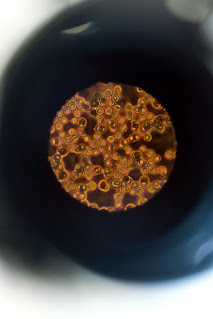-Pratyush Mishra
Bacterial diversity is huge. Unlike other living organisms they can display a more sophisticated behavior as a population. This behavior occurs either in a single species or in a population of mixed species. Some pathogenic bacteria have the ability to overtake host cellular mechanisms and even can fool the immune system of the host organism in a disease dependent way. The mechanism underlying these aspects is a potential area of research. However there must be a unique mechanism for this coordination which is sometimes referred to as a biological neural network. This type of intelligence shown by bacteria is popularly known as Bacterial intelligence.
I.Q scores are used generally to assess the intelligence of human beings. Tel Aviv University has developed a social I.Q score for bacteria on the basis of which one can decide how smart a bacterium is and how it can be used for various ecological purposes. For humans, the classical method of IQ calculation of humans includes division of mental age to that of physical age.
Current method uses various statistical aspects. But when it comes to bacteria their IQ can be analyzed through a wide scale gene screening. Apart from that other methods can involve behavioral analysis and community level interactions of bacteria to predict their intelligence. The genes of various signaling pathways, pattern formation, virulence etc. can be used as an indication of a certain level of intelligence in bacteria.
An international team led by late Prof. Ben Jacob found that a pattern forming bacteria, the Paenibacillus vortex, had the highest social I.Q score among 500 other bacteria whose genome was sequenced. Thus bacteria which were regarded as low level entities are highly social and evolved. This information can also be directly applied in “green agriculture” or biological control methods. Once we can determine their I.Q we can use them as biotech. factories and apply them optimally in health, agriculture and various other fields of research.
Bacteria use this method to regulate certain phenotypic expressions, which in turn coordinate their behavior. It can occur within the same species of bacteria or between diverse species of the same or different bacteria. Some well-known phenotypes include biofilm formation, motility, bioluminescence, sporulation etc. However Q.S enables bacteria to restrict the expression of specific genes to high cell densities at which the resulting phenotype would be more advantageous. Their gene expression is highly coordinated, thus resulting in a biological neural networking system.
Some useful application bacterial intelligence include:
Bacterial colony optimization:
Bio augmentation:
Speeding the rate of degradation of a contaminant. Addition of the genomes of autotrophic C or N fixing organisms to the metagenome of certain bacteria enhances their intelligence.
Other applications include nutrient enrichment in soil, chemical fixation, antibiotic production, biotechnical aspects etc.
Intelligence is an outcome of good organization and coordination. Bacteria in a population have developed a networking mechanism which allows them to adopt certain phenotypes which are well suited for their growth, development, resistance etc. The ability of bacteria to respond specifically to the environment and orient them according to it is called its intelligence. Understanding this smartness will help us in developing several methods beneficial for mankind.
GLOSSARY
Biofilm formation:
A process through which bacteria colonize and then irreversibly attach to a surface to grow as a population by producing several extracellular polymers.
Bioluminescence:
Production or emission of light by living organisms like bacteria
Motility:
Ability of an organism to move by using its metabolic energy
Sporulation:
Process of forming resistant spores. In the case of bacteria they are structures meant for perennation. Most bacteria produce endospores.
Pratyush Mishra




